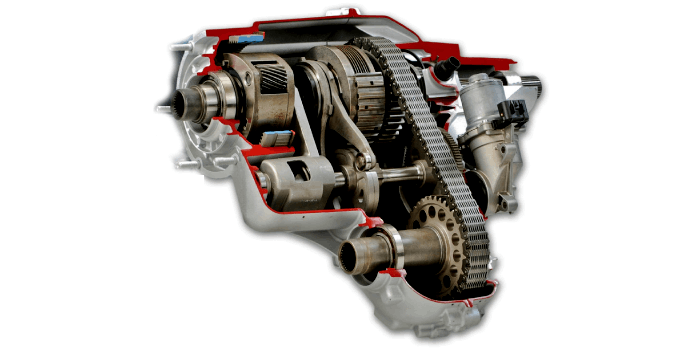Get Your Free Quote
- Best Price Guarantee Buy with confidence because you aren't getting a better price than this.
- Free Shipping
Enjoy the luxury of free shipping on orders above $299. - A Grade Quality Used Car Parts
Avail the best OEM Auto parts & components that are just as new. - Our Friendly Parts Specialist will get you what you need !!
What Is A Transfer Case?
In Cars With Four-Wheel Drive, All-Wheel Drive, And Other Multiple-Powered Axles, A Transfer Case Is A Component Of The Drivetrain. Drive Shafts Are Used By The Transfer Case To Send Power From The Gearbox To The Front And Rear Axles. It's Not A Good Idea To Drive Your Automobile With A Damaged Transfer Case. If You Drive With A Transfer Case That Has A Significant Mechanical Issue, You Risk Irreparably Damaging It And Maybe Also Harming Your Transmission, Driveshafts, And Axles.

(786) 550-5786
How Does The Transfer Case Work?
The Transfer Case Is A Part Of The Vehicle's Drive Train That Allows Power To Be Directed To Different Wheels. Depending On The Type Of Vehicle, It Can Be A Part Of The Transmission Or Be A Separate Unit. Transfer Cases Can Be Gear-Driven Or Chain-Driven. Some Have Specific Gears For Off-Road Use. A Lot Of The Time, Transfer Cases Are Manually Operated. However, Some Newer Vehicles Have An Electronic System To Control The Device.
It Is Important To Maintain The Transfer Case Properly. This Can Reduce The Risk Of Problems. Regularly Check The Fluid Level And Replace It When Necessary. You Should Also Inspect The Exterior Of The Transfer Case. If There Are Any Signs Of Wear And Tear, Such As Bad Seals, You Should Consult A Mechanic. There Are Four Types Of Differentials. Differentials Are Used To Handle The Speed Difference Between The Inside And Outside Wheels. They Can Also Be Used To Help Traction When Driving On Slippery Surfaces.
A Transfer Case Transfers Power From The Transmission To The Drive Shafts. In Some Cases, It Will Automatically Disengage When Extra Traction Is Not Needed. While Most Cases Are Not Complex, They Do Need To Be Maintained. Transfer Cases Can Malfunction If The Transmission Fails. This Can Result In An Uneven Amount Of Traction And A Lack Of Handling. Symptoms Of This Problem Include Slipping Or Grinding Sounds. Transfer Cases Can Also Be Damaged From Improper Installation. Do-It-Yourself Mechanics Have Ruined Some Newer Transfer Cases By Putting In Improper Components.
(786) 550-5786
Types Of Transfer Cases
There Are Several Names For Distinct Four-Wheel Drives, And Most Of Them Refer To A Slightly Different Differential Inside The Transfer Case. Here Is A List Of The Participants And The Rules Of The Name Game.
Part-Time 4wd: The Most Typical Kind Of Transfer Case Is This One. You May Drive The Car In Two-Wheel Drive, Four-Wheel High Range (4hi), And Four-Wheel Low Range (4wl) (4lo). A Differential Is Used In 4hi Operation. These Systems Enable Smoother Running On Pavement And Improved Fuel Efficiency Since The Power To The Front Driveshaft And Axle May Be Fully Shut Off. Because They Were Created For Actual Off-Road Use, Frequently In Truck Applications, The Strongest Transfer Cases Are Typically Part-Time Systems.
Full-Time 4wd: The Simplest Sort Of Transfer Case Is Full-Time 4wd. It Continuously Transfers Power To The Front And Back Axles. These Employ An Open T-Case Differential In High Range To Completely Prevent, Or At The Very Least Reduce, Driveline Binding On Hard Terrain. A 4hi Lock Setting Is Offered By Some, Which Locks The Differential.
Active 4wd: Over The Past Ten Years Or So, Many Full-Time And Intermittent Systems Have Been Created That Employ Mechanical Or Electrical Mechanisms To Modify The Amount Of Power Sent To The Front Axle In Response To The Wheel Slide. They Go By Many Names And Function At Different Levels, But They Offer Some Of The Advantages Of A Part-Time System Without Requiring The Owner To Ever Switch Anything.
Shift Type For Transfer Cases
Manual Shift On-The-Fly (Msof): On The Driver's Side Floor Gearbox Hump, Transfer Cases Include A Selector Lever. They May Additionally Have Two Sealed Automatic Front Axle Locking Hubs, Two Manual Front Axle Hub Selectors Marked "Lock" And "Unlock," Or Two Manual Front Axle Hub Selectors Marked "Free." The Vehicle Must Be Driving At A Low Speed In Order To Activate The Four-Wheel Drive System. Depending On The Vehicle, 4x4 Can Be Engaged At Varying Speeds. Only The Four-Wheel-Drive High Setting Is Affected By This. The Car Must Be Stopped, The Gearbox Must Be Put In Neutral, And Then The Four-Wheel-Drive Low Setting May Be Chosen.
Electronic Shift On-The-Fly (Esof): Front-Sealed Automatic Locking Axle Hubs Or Drive Flanges Are A Feature Of Electronic Shift On-The-Fly (Esof) Transfer Cases, Which Also Include Selectable Switches Or Buttons Positioned On The Dash. This System Features A Transfer Case Motor, Unlike The Manual Transfer Case. The Car Must Be Driving At A Slower Pace In Order For The Four-Wheel-Drive System To Engage. Depending On The Vehicle, 4x4 Can Be Engaged At Varying Speeds. Only The Four-Wheel-Drive High Setting Is Affected By This. The Car Must Be Stopped, The Gearbox Must Be Put In Neutral, And Then The Four-Wheel-Drive Low Setting May Be Chosen.
(786) 550-5786